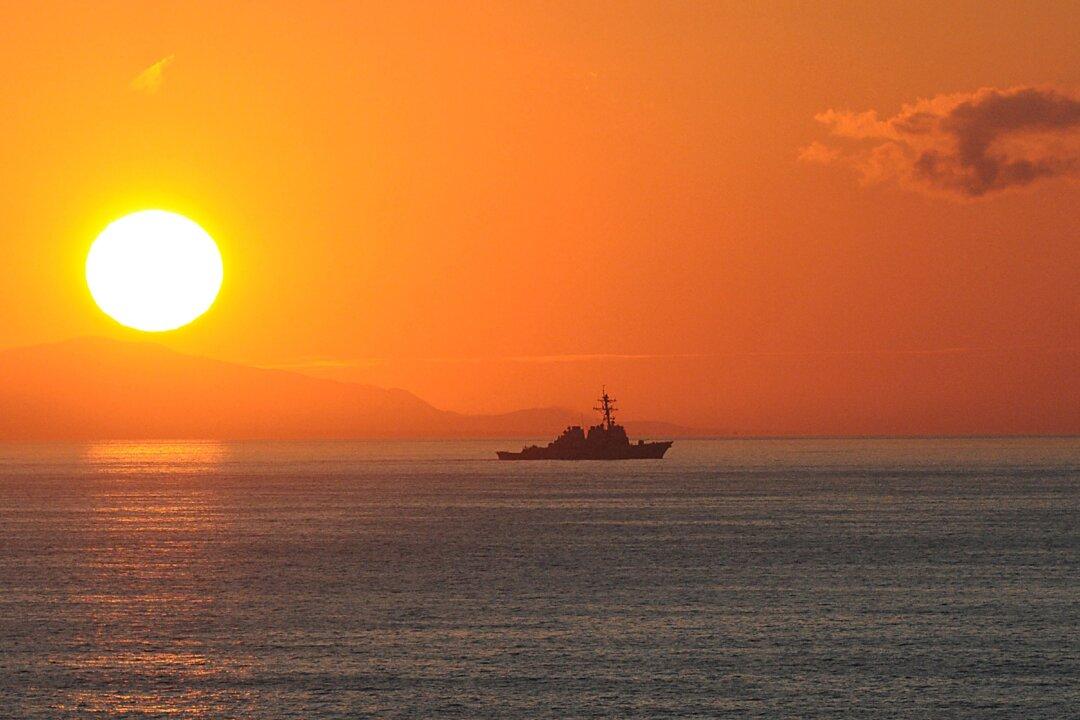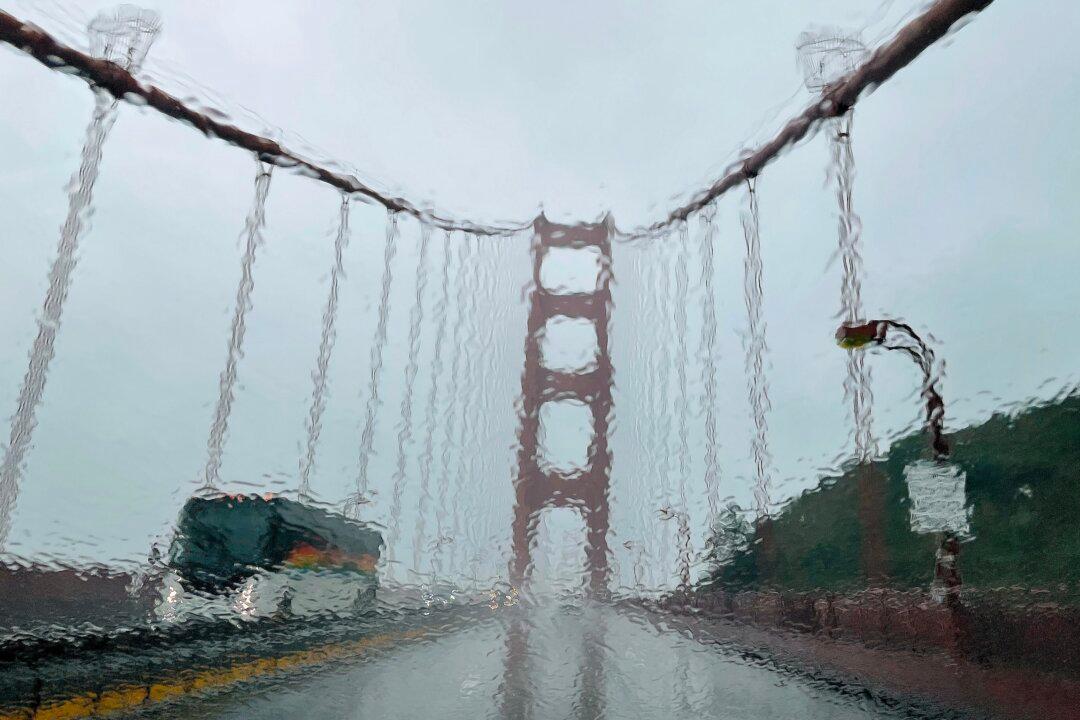On March 28, the Department of Defense announced that it had completed the defueling of the U.S. Navy’s Red Hill bulk oil storage tanks for the Pacific Fleet.
It did so six months early.
The permanent closure of Red Hill was a thrilling achievement, said many—Secretary of Defense Lloyd J. Austin III, Pentagon and Navy spokesmen, Hawaiian officials, environmental groups, and the chemistry-terrified citizens of Hawaii.
Mr. Austin, a retired army general, said, “The Department of Defense and the United States Navy remain deeply committed to protecting the public’s health and preserving the environment.”
He also said they are committed to continuing to rebuild trust with Hawaii.
“This is the right thing to do,” he said. “It likely made sense in 1943, when [it] was built ... a lot less sense now.”
Why Did the US Build Red Hill?
The United States was blind lucky the Japanese failed to target oil tanks at Pearl Harbor. So, since 1943, at Red Hill in Oahu, Hawaii, the oil reserves of the Seventh Fleet were located in 20 underground steel-lined concrete reservoirs safer from enemy attack than aboveground tanks.What was once the U.S. Navy’s fuel supply to defeat the Japanese in World War II is now denied the U.S. Navy as it faces the Chinese Communist Party’s (CCP’s) rapidly enlarging and newer Navy.
The Sierra Club
The Sierra Club’s end objective at Red Hill was Water Justice—“fighting against the military industrial complex and capitalist corporate-controlled industries.”In December 2012, the Sierra Club, among others, alleged that there were 5,000 ill people and 3,000 families displaced at the Pacific Fleets’ oil reserves at Red Hill.
The Sierra Club stated that it wanted to end “an existential and unprecedented threat.”
“Millions of gallons of fuel still sit in the Red Hill fuel tanks directly above the aquifer, continually threatening to poison our water again,” it stated.
Demon Oil
Underground oil and gasoline tanks and their owners have been under regulatory attacks for decades. In California, regulators closed an estimated 170,000 leaking underground gasoline storage tanks. Very few family-owned, independent gasoline stations survived.In perspective, the present danger is an aggressive, militarized CCP, not a chemical present in water in parts per trillion killing an unknown number of people, if any, decades later.
The math of correlations is not causation; it is mere association, a matter of serious interest, not proof.
Overall, there were very precise measurements of substances in parts per million, billion, and trillion to discover the last scary molecule on Earth.
Although measurement is precise, and enforcement is heavy and ever-expanding, the science of health effects is largely politically mobilized, declared, presumed, or speculated.
The dangers of trace elements of asbestos, perfluorooctanoic acid (PFOA), perchlorate, heavy metals, and solvents in petroleum are exaggerated. They smell bad, but there is little evidence that their concentration in water is a health risk in parts per billion and trillion. They are everywhere but are not proven dangerous to human health.
For example, the federal standard of danger from PFOA of 20 parts per trillion is equivalent to waiting 32,000 years for 20 seconds to pass.
In telling contrast, the CCP’s cyberattacks travel 186,000 miles a second. They are a nanosecond away and are happening every day. Similarly, a nuclear-armed hypersonic missile at Mach 10, 7,000 miles per hour, takes only 30 minutes to travel from coast to coast.
In 2022, President Joe Biden, trying to lower the price of gasoline before the midterm elections, sold off hundreds of millions of barrels of oil from the Strategic Oil Reserve, reducing it to a forty-year low. At least a million barrels of American oil was sent to oil-poor China, fueling China’s promised and rehearsed Taiwan invasion as early as 2024.
Complicit in reducing oil reserves was Energy Secretary Jennifer Granholm, who spoke twice with China National Energy Administration Chairman Zhang Jianhua, a senior member of the CCP, before the White House announced selling off emergency oil stocks.
In late October 2022, America’s top brass arrived in Hawaii to discuss “The Red Hill Defueling, Closure, and Health Response Plan.” Among them were Mr. Austin and the secretary of the Navy, the undersecretary of defense for personnel and readiness, the chief of naval operations, the INDOPACOM commander, and finally Joint Task Force Red Hill Commander Rear Adm. John Wade.
The Coal Option
While China consumed more than 4 billion tons of coal in 2022—more than the rest of the world combined—U.S. environmentalists instead focused on hysterical attacks on capitalists and military bases. While coal prepared the CCP for war, U.S. environmental regulations harmed the national security of the United States.Similarly, the environmentally enlightened state of Hawaii stopped coal shipments and shut down Hawaii’s last coal power plant. Fossil fuels for Hawaii’s citizens and the Pacific Fleet are radically reduced.
The U.S. Navy was left to compete for a share of oil from leaking tankers, an environmental risk far worse than Red Hill’s dribbling underground tanks.
In Defense of Red Hill
The level of water contamination from a 2014 leak from one of the fuel tanks was in compliance with federal and state concentrations for drinking water.Indeed, the USEPA website on Red Hill still concluded in July 2022, “All drinking water supplies in the vicinity of Red Hill continue to meet all federal drinking water standards.”
Angering the zealous and hysterical mob was the U.S. Navy’s claim that its investigations had yet to find health consequences.
Effectively equivalent to an order from the CCP’s People’s Liberation Army, in January 2022, for lack of “trust,” the Honolulu City Council sent a letter to President Biden threatening to throw all of the United States’ 14 military operations permanently out of their seven-year land leases in Hawaii.
In February 2022, the Navy, claiming that the Hawaii Department of Health (DOH) was overstepping its emergency powers, filed a lawsuit opposing the DOH’s order to suspend operations at the Red Hill Bulk Fuel Storage Facility.
On Nov. 20, 2021, an aboveground fire suppression, a PFA drain line, released water a quarter of a mile downhill of the Red Hill fuel tanks, contaminating the Red Hill Shaft, a single water well. This aboveground leak triggered the mobilization of hysterical fears about poisoned water coming from underground tanks rather than the actual aboveground source.
Civilians and the Navy compete for oil tankers.
Former Maersk executive Steve Carmel stated in a gCaptain editorial: “The Department of Defense is projected to need on the order of one hundred tankers of various sizes in the event of a serious conflict in the Pacific. ... The U.S. ... has no identifiable roadmap to obtain it.”
Few oil reserve locations remain.
As long ago as February 1998, the Department of Energy sold the 47,000-acre Naval Petroleum Reserves in the Elk Hills and Buena Vista oil fields in Kern County, California, to Armand Hammer’s Occidental Petroleum.
Armand Hammer, a capitalist friend of Lenin and Stalin, was a go-between for five Soviet general secretaries and seven U.S. presidents and won the Soviet Union’s Order of Friendship of Peoples.
What Will the Navy Do Now?
The Pentagon’s fabricated answer is a new “distributed” strategy of storing fuel at various points around the region and in “afloat locations” aboard unavailable tankers. It declared that the new plan would provide “resilience” and flexibility.Contracted private tankers removed fuel from Red Hill and redistributed it to West Oahu facilities run by Island Energy Services at Campbell Industrial Park and to San Diego, Singapore, and Subic Bay.
Good luck with that!







